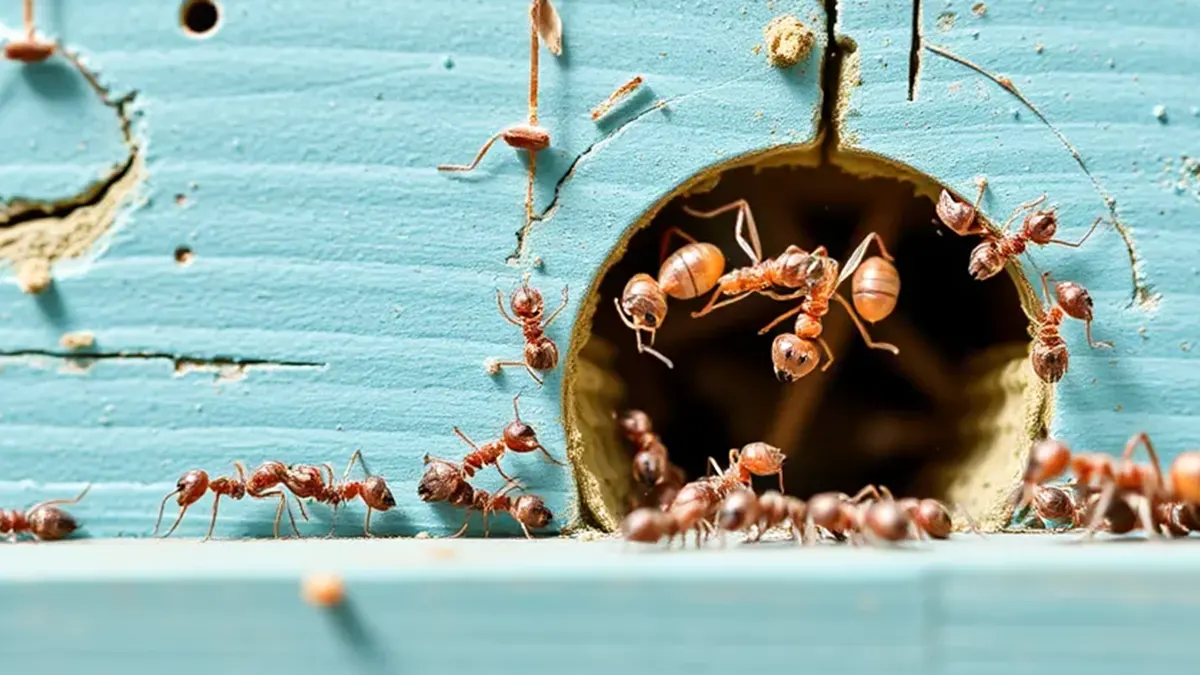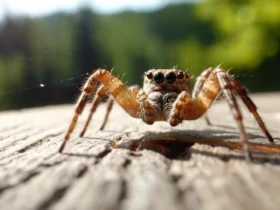Carpenter ants can be more than just a nuisance—they can cause significant structural damage to your home if left unchecked. Unlike termites, carpenter ants don’t eat wood, but they burrow into it to build nests, which can weaken wooden structures over time. If you’ve spotted large black or reddish-brown ants crawling around your home, it’s important to act quickly.
In this comprehensive guide, we’ll walk you through the steps to identify and eliminate carpenter ants from your home. From recognizing the signs of infestation to actionable tips for prevention, you’ll learn how to protect your home and ensure these pests don’t come back.
Table of Contents
1. What Are Carpenter Ants?
Carpenter ants are large ants that range in color from black to reddish-brown. They are known for building their nests in wood, which can lead to damage in homes, particularly in areas with moisture. Unlike termites, carpenter ants don’t consume wood—they simply hollow it out to make space for their colonies.
Here’s why you need to act fast if you notice these ants: left unchecked, they can cause structural damage to wood, making repairs costly. Plus, their colonies can grow rapidly, spreading throughout your home.
2. Signs of a Carpenter Ant Infestation
Identifying a carpenter ant infestation is the first step in resolving the problem. Here are the key signs that indicate carpenter ants may have invaded your home:
- Large Ant Sightings: If you frequently see large ants (¼ to ½ inch) inside your home, especially near wooden structures, this could indicate carpenter ants.
- Sawdust (Frass): As carpenter ants burrow through wood, they leave behind a sawdust-like material known as frass. If you find small piles of wood shavings near door frames, windowsills, or baseboards, it’s a strong sign of their presence.
- Rustling Sounds: In quiet areas of your home, particularly in walls or floors, you might hear faint rustling sounds. This could be the ants working within the wood.
- Winged Ants (Swarmers): During mating season, carpenter ants develop wings and swarm in search of new nesting locations. If you spot these flying ants inside your home, you likely have a mature colony nearby.
3. Step-by-Step Guide to Eliminating Carpenter Ants
Once you’ve identified carpenter ants in your home, it’s time to take action. Follow these steps to eliminate the infestation and protect your home from further damage.
Step 1: Locate the Nest
Finding the nest is the key to eradicating carpenter ants. There may be both primary and satellite nests. Primary nests are typically located in moist, decayed wood, while satellite nests can be found in drier areas like walls, ceilings, or attics.
- Follow the Ant Trail: Carpenter ants leave behind a chemical trail that other ants follow. Observe their movements to trace the trail back to the nest.
- Check Moist Areas: Carpenter ants are drawn to moisture. Check areas with potential water damage, such as around plumbing leaks or damp wood.
Step 2: Eliminate Moisture Sources
Carpenter ants thrive in moist environments, so eliminating sources of moisture is critical to preventing further infestations.
- Fix Leaks: Repair any leaking pipes, faucets, or roofing to remove excess moisture.
- Improve Ventilation: Use dehumidifiers or fans in damp areas like basements and attics to reduce moisture levels.
Step 3: Bait and Treat the Ants
Once you’ve located the nest, it’s time to treat the ants.
- Use Ant Baits: Carpenter ants are attracted to sugary and protein-rich baits. Place ant bait along their trails, and the worker ants will carry the poisoned food back to the nest, eliminating the colony.
- Apply Insecticides: If you’ve located the nest, you can treat it directly with insecticidal dust or foam. These products are designed to penetrate wood and kill ants inside the nest.
Step 4: Seal Entry Points
Prevent future infestations by sealing any entry points around your home.
- Inspect for Cracks: Check your home’s foundation, windows, and doors for gaps or cracks, and seal them with caulk or weatherstripping.
- Install Screens: Ensure that windows and vents are equipped with screens to prevent ants from entering your home.
Step 5: When to Call a Professional
If you’re unable to locate the nest or the infestation is too severe, it may be time to call a pest control professional. They can use specialized equipment and stronger insecticides to eliminate carpenter ants effectively.
4. Natural Methods to Get Rid of Carpenter Ants
If you prefer natural or non-toxic solutions, there are a few alternative methods to get rid of carpenter ants:
Using Diatomaceous Earth (DE)
Diatomaceous earth is a natural powder made from fossilized algae that can kill ants by dehydrating them. Sprinkle DE around ant entry points and suspected nest locations.
Vinegar and Water Spray
Mix equal parts vinegar and water in a spray bottle and apply it along ant trails. The acidic properties of vinegar disrupt ant pheromone trails and can repel ants from your home.
Essential Oils as a Natural Repellent
Certain essential oils like peppermint, tea tree, and lemon oil are known to repel carpenter ants. Combine a few drops of oil with water and spray it in areas where ants are active.
5. Preventing Future Carpenter Ant Infestations
The best way to protect your home from carpenter ants is to take proactive measures. Here are some tips to prevent future infestations:
Maintain Wooden Structures
Regularly inspect wooden structures in and around your home for signs of moisture or decay. Replace damaged wood promptly to discourage ants from nesting.
Store Firewood Away from Home
Carpenter ants often nest in firewood piles. Keep firewood stored at least 20 feet away from your home and elevate it off the ground.
Trim Trees and Shrubs
Tree branches and shrubs can act as bridges for carpenter ants to enter your home. Keep vegetation trimmed and away from the exterior of your house.
Eliminate Food Sources
Carpenter ants are attracted to food, particularly sugary and protein-rich substances. Clean up spills immediately and store food in airtight containers.
Inspect Screens and Weatherstripping
Regularly inspect windows, doors, and vents to ensure they’re properly sealed. Repair or replace damaged screens and weatherstripping to block ant entry points.
6. Conclusion: Keep Carpenter Ants Away for Good
Carpenter ants can cause serious damage if left unchecked, but with the right approach, you can eliminate them and prevent future infestations. Start by identifying the signs of an infestation, locate the nest, and use a combination of baits, insecticides, and natural remedies to rid your home of these destructive pests.
By taking preventative measures like eliminating moisture and sealing entry points, you can protect your home from carpenter ants and enjoy peace of mind.
N








